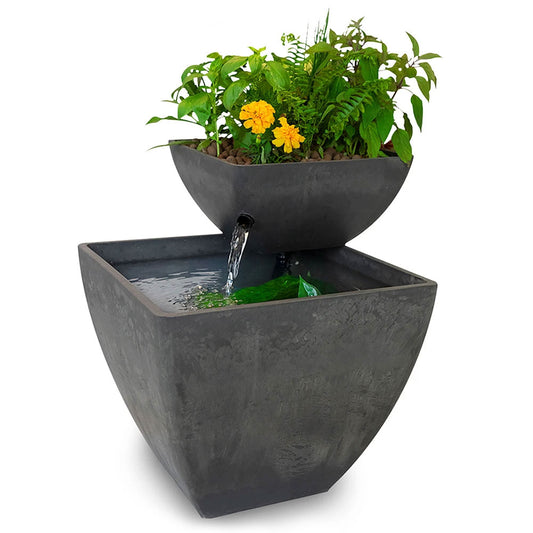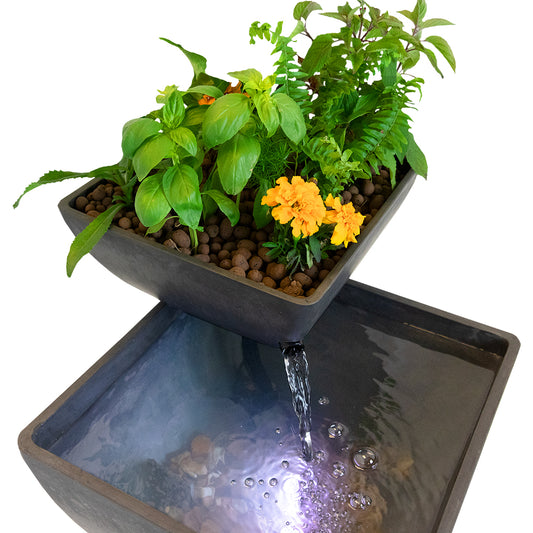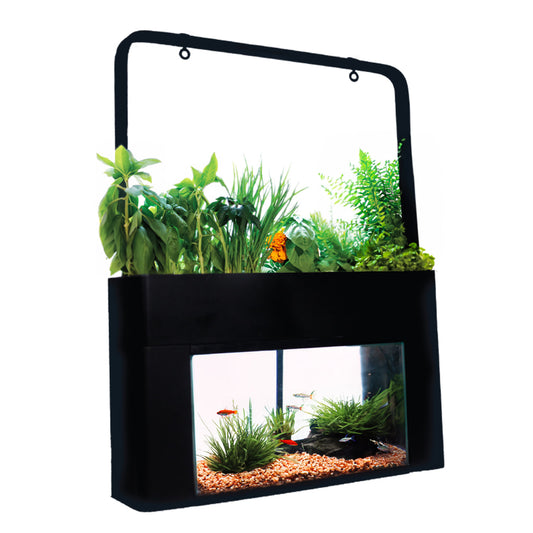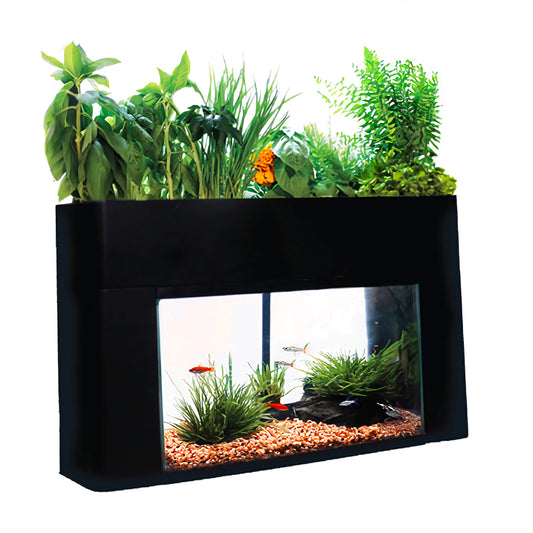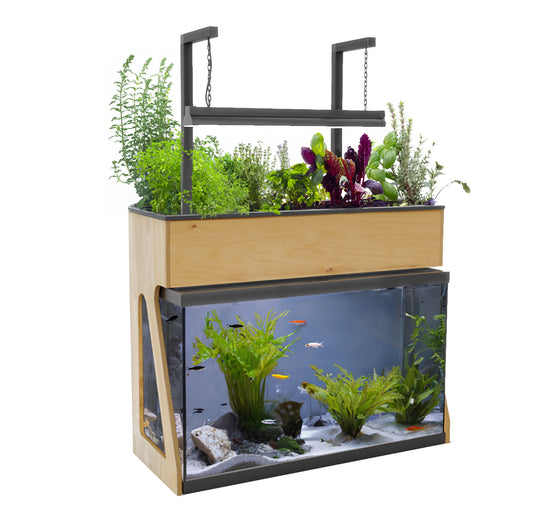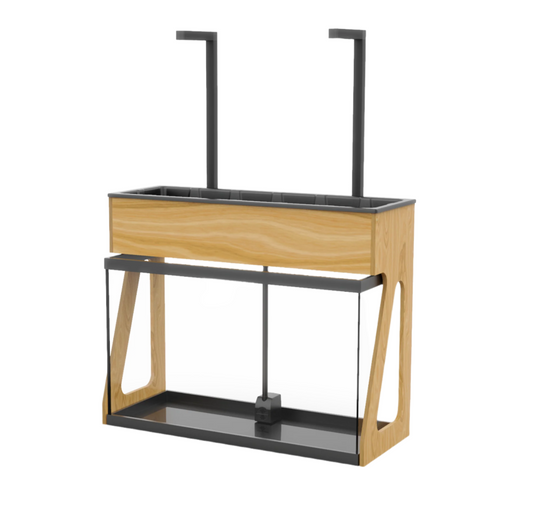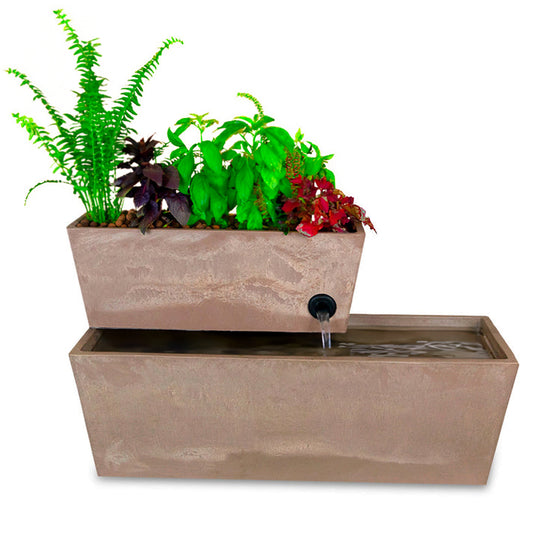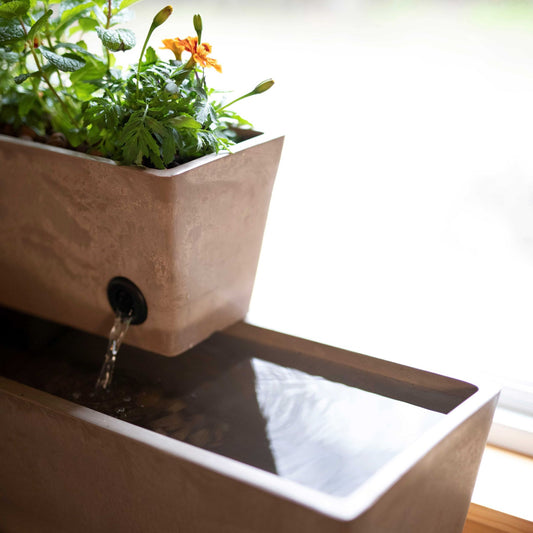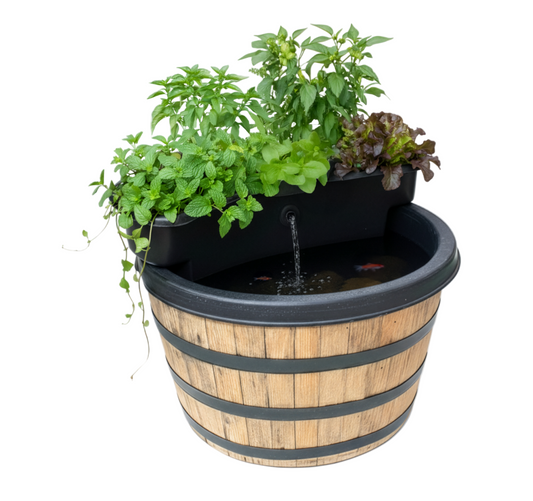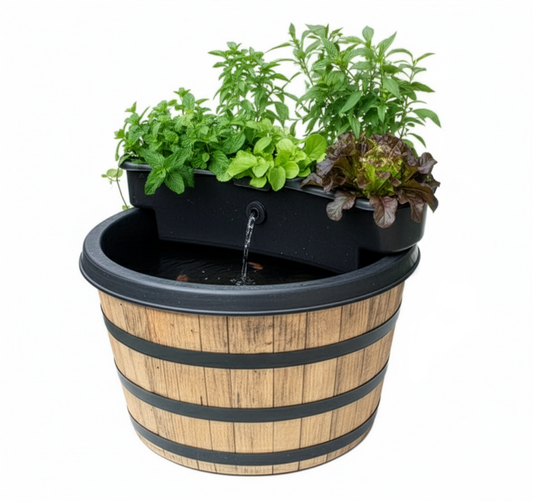The Ultimate Maker Tool Isn't a Robot—It's an Ecosystem
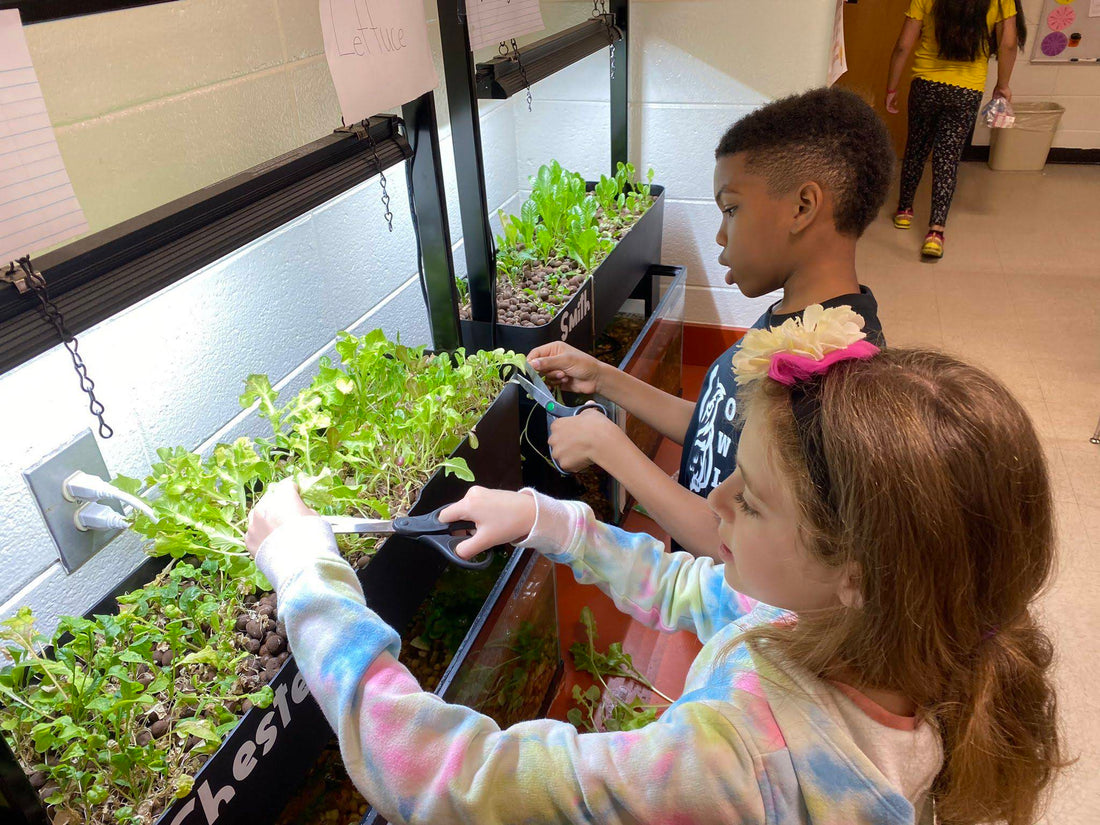
Step into any modern school or library makerspace, and you’ll feel the buzz of innovation. You’ll see the focused glow of students designing on laptops, hear the precise hum of a laser cutter, and watch the methodical dance of a 3D printer building an idea from the ground up. These spaces are incredible engines for learning, teaching students to code, design, and build the future.
But what if the most powerful maker tool wasn't one you programmed, but one you partnered with? What if the most profound lessons in design, engineering, and problem-solving came not from a robot, but from a living, breathing ecosystem? It’s time to invite a new kind of technology into our makerspaces: a living one.
A Perfect, Self-Sustaining Loop of Life
At its heart, the AquaSprouts Garden is a beautifully simple concept that demonstrates one of nature’s most elegant designs. It’s an aquaponics system—a combination of aquaculture (raising fish) and hydroponics (growing plants without soil). In this closed-loop ecosystem, fish produce natural fertilizer for the plants, and the plants, in turn, clean the water for the fish. It’s a perfect, self-sustaining partnership where every component works together to thrive.
Housed in a sleek unit that sits atop a standard 10-gallon aquarium, the AquaSprouts Garden transforms a simple fish tank into a vibrant, productive indoor garden. It’s a desktop ecosystem that brings abstract science concepts, like the nitrogen cycle, to life right before your students' eyes. They don't just read about symbiosis; they actively manage it.
Stewardship, Not Just Programming
A robotics project is a fantastic way to teach logic, sequencing, and computational thinking. If the code is right, the robot performs its task. The lesson is one of control and precision.
A living ecosystem teaches a different, arguably deeper lesson. It teaches adaptation, observation, and responsibility. Students managing an AquaSprouts Garden learn to respond to the needs of a dynamic system. They can’t simply program it and walk away. They must test the water chemistry, observe the health of the fish and plants, and make adjustments. They learn that their actions have consequences within a complex web of life. This is a lesson in stewardship, not just programming, and it cultivates a profound sense of care and connection to the natural world.
A Perpetual Engine for Curiosity
The best makerspaces embrace a philosophy of "Loops, not Lines." They favor open-ended activities that allow for multiple entry points and self-directed exploration, rather than rigid, linear projects with a single outcome. The AquaSprouts Garden is the ultimate "Loop" activity.
There is no official start or end point. On any given day, one student might be meticulously logging the pH level, another could be measuring the height of the basil plants, a third might be observing fish behavior, and a fourth could be harvesting lettuce for the school cafeteria. It is a perpetual engine for curiosity, inviting students to engage at whatever level they choose and to ask their own questions. It’s a space where tinkering, exploration, and discovery are not just encouraged—they are essential for the system’s success.
A Cross-Curricular Catalyst
The AquaSprouts Garden is a STEM powerhouse in a box. It’s a living illustration of biology’s nitrogen cycle, a hands-on lab for chemistry’s water tests, a real-world data generator for math’s graphing and analysis, and a case study for engineering’s system design.
But its reach extends far beyond STEM. It’s a lesson in environmental science with every drop of water it conserves. It’s a platform for business and economics when students decide to sell their produce at a school market. It’s an exercise in language arts when they write about their findings or create presentations to advocate for sustainability. And it's a tool for social-emotional learning, fostering patience, empathy, and teamwork. It’s a living, growing hub for truly integrated, project-based learning.
From Classroom to Community: Making a Real-World Impact
Across the country, aquaponics is transforming learning. We see middle schoolers managing entire fish farms and planning charity dinners with their harvest. We see high schoolers designing large-scale systems that produce dozens of heads of lettuce each week, all donated to local food banks.
These students aren't just completing a science project; they are becoming scientists, engineers, and community leaders. They are tackling real-world problems like food security and sustainability and making a tangible impact. They take ownership of their work because they see that it matters beyond the classroom walls. This is the kind of deep, purposeful learning that stays with a student for a lifetime.
The AquaSprouts Advantage: Designed for Discovery
As an educator, you might be thinking, "This sounds amazing, but also… complicated." We hear you. That’s why the AquaSprouts Garden was designed from the ground up to be simple, safe, and beautiful. It requires no special tools for setup and is engineered for low maintenance, removing the barriers and risks of complex DIY projects. We’ve handled the engineering so you and your students can focus on the discovery.
Bring a living ecosystem into your makerspace. Let your students build a partnership with the natural world. Watch them grow alongside their garden.

